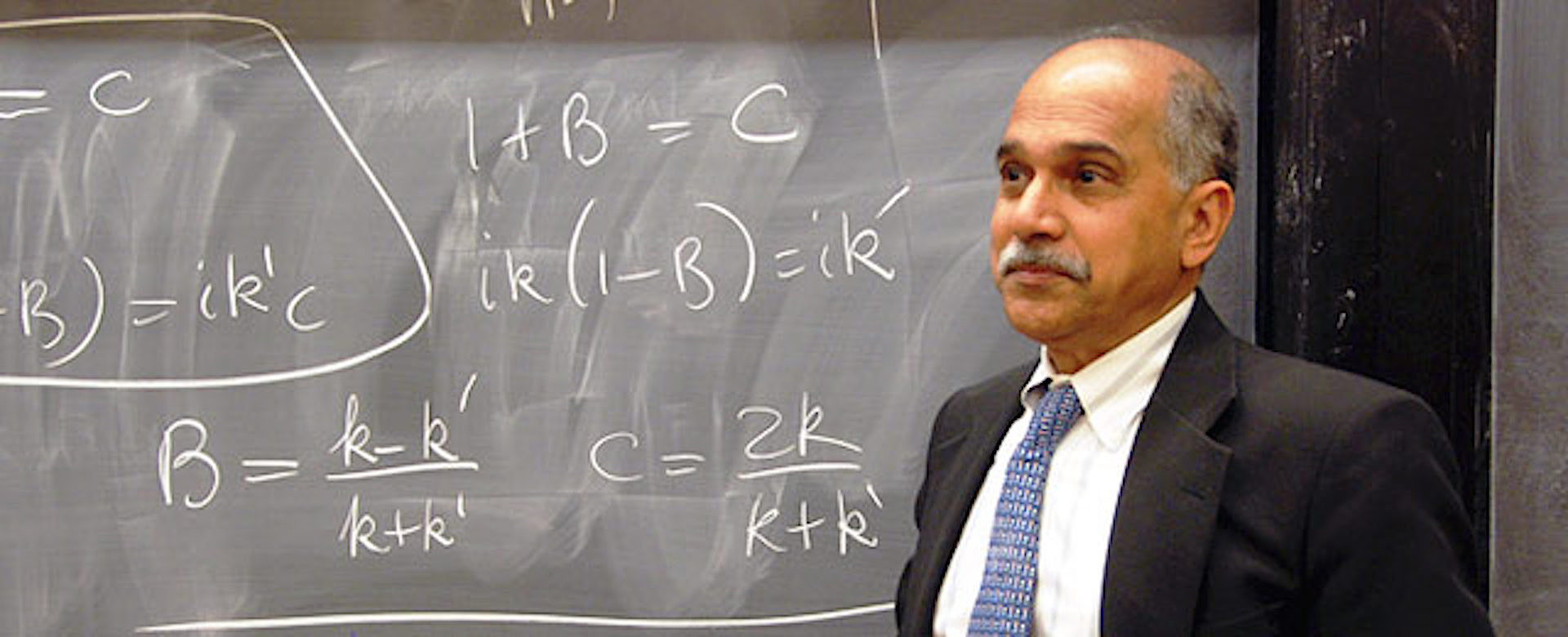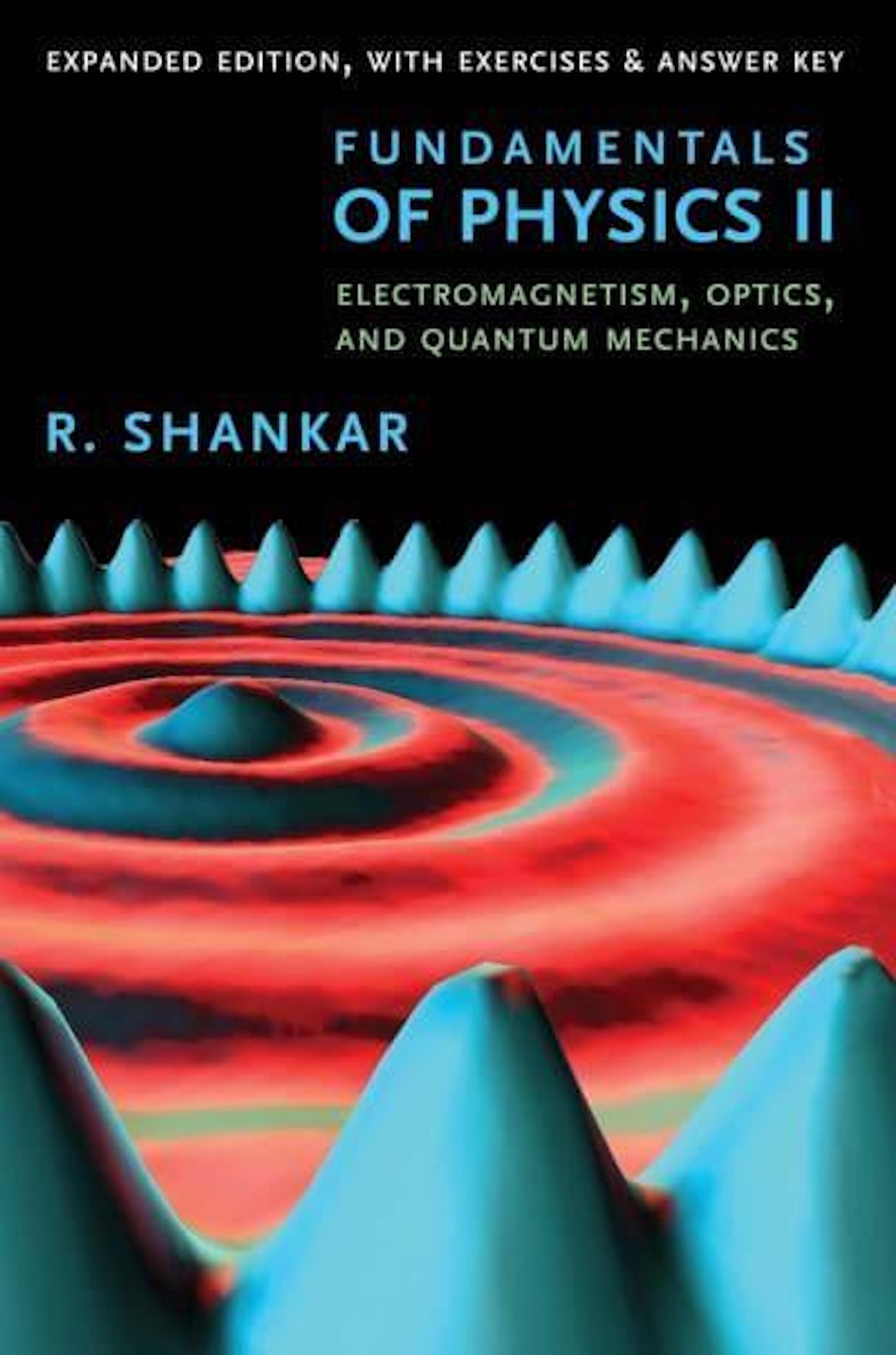 R. Shankar, courtesy of Yale University
R. Shankar, courtesy of Yale University
It all started in 1990 when I was attempting the transition from particle theory to condensed matter theory.
It was the best of times and the worst of times: it was an exciting time following the discovery of high Tc superconductivity, which unfortunately implied the subject was in a state of flux, with a dizzying barrage of new data and ideas. No matter how much I drank from this firehose, I could not shake the constant impression that there was a lot going on behind my back. For example, just when I had finished learning what a Fermi liquid was, I was told that Fermi liquid was so old school, and that the new thing was the non-Fermi liquid. No one seemed to know what it was, except that it wasn’t a Fermi liquid. The only option (not viable) was to go on a national tour talking to the ring leaders and get up to date.
My friend Andrei Ruckenstein put me out of my misery by conjuring up a solution that allowed me to see all the experts sitting in one place: the place being KITP, which was running a workshop on this very topic in Spring 1990. He snuck me into the program and KITP secured housing for my family near campus, allowing me to focus on my work.
 Introductory physics book written by R. Shankar during his 2014 visit to KITP as a Simons Distinguished Visiting Scholar, courtesy of Yale University Press
Introductory physics book written by R. Shankar during his 2014 visit to KITP as a Simons Distinguished Visiting Scholar, courtesy of Yale University Press
Now my education began in earnest, without my moving an inch. In the next six months all the major players passed through the KITP enlightening me. Unlike with usual seminars where the speakers kept the taxi waiting and had just a few hours to answer questions, the KITP speakers typically stayed on for several days or even longer if they were part of a program. This allowed the participants to pick their brains at leisure, which I did to the fullest. Since everybody who was anybody passed though the KITP, even before the end of the semester I became confident that I had assimilated all the major ideas. When I left, my conversion was complete and I never looked back. It is no exaggeration to say that without the KITP interlude I could not have made this timely and beneficial migration.
In the following years I came often to charge my batteries for stays of several weeks.
But old habits die hard and I was back in 2014 for a longer stay. Here is the context. Yale had decided to videotape a few introductory courses and put them on line for free consumption, under the heading of Open Yale Courses. My two courses on introductory physics were on this list. I was subsequently asked if I wanted to write two books based on them. I was reluctant to write any intro physics books: these were increasing in size so fast they were headed for gravitational collapse and were guaranteed to induce hernia and bankruptcy in the student. What persuaded me was the promise that Yale Press would publish them as two slim paperbacks for under $25 each.
I had a sabbatical coming up and I wanted to write the book away from New Haven, where the tentacles of Yale could grab me for committee work. Hiding in a cabin in a forest was not an option since I did not want to be in total isolation and lose touch with current physics developments.
I was able to have my cake and eat it too thanks to a Simons Professorship at KITP. I spent Fall 2014 transforming the audio and video from my lectures into Volume 2 of Fundamentals of Physics. I divided my time between writing the book and attending a lot of lectures and seminars, staying on top of my field and flirting with other fields represented by parallel workshops.
Once again KITP had come to my rescue. The book (copies of which I sent to KITP) came out with the following acknowledgement: “A large portion of the book was written at the Kavli Institute for Theoretical Physics (KITP), where I was fortunate to receive a Simons Distinguished Visiting Scholar award for Fall 2014. The KITP is supported by the National Science Foundation under Grant number NSF PHY11-25915. I am especially grateful to Professor Lars Bildsten for making this possible”.
My admiration of KITP is no secret: I speak of it often to my colleagues around the globe and to the people who run it, like its current and past directors Lars Bildsten and David Gross. I have tried to repay my debt over the years by acting as cheerleader and by taking part in its governance and outreach, but that only scratches the surface.
KITP is a gift that keeps on giving. It renders unique services to the community, my case being one of so many.
by Professor Ramamurti Shankar
